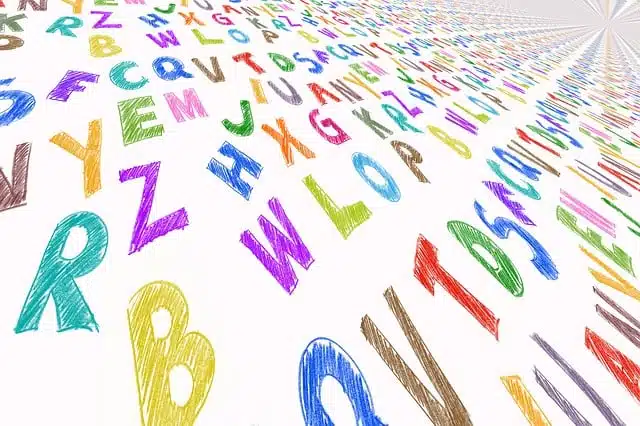
The letters are graphemes.
The etymological origin of the term grapheme is found in Greek. Specifically, we can establish that it is the result of the sum of several lexical components of said language:
-The verb graphein , which means “to write”.
-The suffix -ema .
Starting from that composition we can establish what “minimum writing unit” means.
Graphemes in the Roman alphabet
In the Roman or Latin alphabet, which is the one we use in our language , the graphemes are the diacritical marks (tilde, umlaut, etc.) and the letters .
It is often said that a grapheme is the minimum element that allows us to distinguish two words written in a language (and, with it, two meanings). Terms like “pala” , “pasa” , “para” and “pata” , for example, are differentiated in each case by a grapheme (a letter, in this specific context).
An accent is also a grapheme that is used to recognize the difference between two words. A “pulpit” (a platform) is not the same as a “pulpit” (a small octopus). The grapheme ´> is the differentiating element.

The minimum element that makes it possible to differentiate between two words is called a grapheme.
Its link with phonemes
The idea of grapheme is analogous to the concept of phoneme : the minimal and indivisible unit at the phonological level. The phoneme is part of the language, it is a formal or mental abstraction of the sound of speech. The grapheme, on the other hand, belongs to the graphic representation system of the language.
A grapheme usually corresponds to a phoneme. In any case, there is no strict correspondence between orthography and phonology. In Spanish, the graphemes c> and h> join together to represent a single phoneme: ch . The union of two letters to represent a single sound is known as a digraph .
It is important to note that, in other alphabets, the link between graphemes and phonology is not as close.
More interesting data about graphemes
Other interesting data about graphemes are the following:
-There are languages in which there are many graphemes that have the peculiarity that they cannot be interpreted.
-On numerous occasions, they are represented using angular type parentheses.
-If it is said to be the minimum writing unit, it is due to the fact that it cannot be decomposed into smaller units.
-It is also important to know that if they are spoken of as distinctive writing units it is because they have the particularity that they help us differentiate in writing what is one linguistic sign from another.
-Graphemes are also sequential. Because? Because they appear successively in what is a written chain.
-We can establish that digraphs are not graphemes but rather are composed of two letters.
-There are also so-called numerical graphemes.
-They also have the particularity that they are abstract and that they can be of two fundamental types: consonant graphemes and so-called vocal graphemes.
-No less interesting is knowing about the graphemes that are capable of carrying out what is the production of a truly significant contrast.
